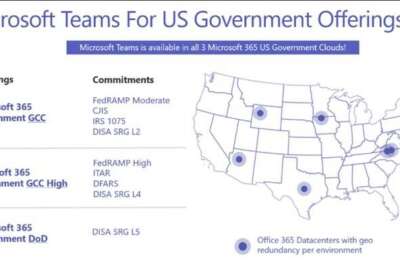
The pandemic has changed how federal organizations communicate
Workers may think they're doing a great job, but they've got a lot of boxes to check.
Best listening experience is on Chrome, Firefox or Safari. Subscribe to Federal Drive’s daily audio interviews on Apple Podcasts or PodcastOne.
If it changed anything, the pandemic changed the way people and bureaus, agencies and departments communicate with one another. Workers may think they’re doing a great job, but they’ve got a lot of boxes to check. That’s according to long time staff management relations expert, Bob Tobias, who joined Federal Drive with Tom Temin.
Interview transcript:
Tom Temin: And Bob, you’ve thought pretty carefully about this whole idea of communication, which is really what management is all about, I guess to start with. So tell us about some of the lessons learned you think so far and what agencies ought to be doing?
Bob Tobias: Well, I think that every manager needs to create a proactive strategic communication plan with those they now lead in this new telework world. And they need it – they need to do it to recreate online a spirit of connection in what is now a very, very disconnected workplace. So as a result of COVID-19 many managers who became telework managers overnight – their entire career they’ve done person to person – and now they had to do lead through telework. And the random, the impromptu opportunities for both social and business discussions disappeared. And we know very well, that connection between leader and led impacts productivity, teamwork, and the ability to solve complex problems. So I’m suggesting that managers need to be proactive, they need to be strategic in their communications with those they lead.
Tom Temin: There’s a really important point you bring up in the face to face idea. Luckily, at least, we do have tools like, we have a thing here called Slack. It’s very popular in the corporate world. And in Slack, there’s a little function where you can actually call someone up and have a video or at least an audio conversation right on the spot. It’s pretty amazing in some ways, but it does give you the one thing that’s often missing in the telework situation, and that is the voice inflection that is never possible in email, and which therefore can cause in email, lots of misunderstandings.
Bob Tobias: That’s a fact. That’s a fact, Tom. And on the telephone the same thing – when I can’t see you, I can’t see your cues. And so I can be misunderstood by you but never know and just keep right on nattering away as though you were understanding every single word I say. So this idea of being proactive, and strategic, I think is critically important.
Tom Temin: And you also mentioned, too, in your kind of suggestion on this interview, that you can’t, as a manager, even if you have a great home office setup, or maybe you can by some stint of policy be in the office itself – it’s hard to know the specific situations of the people that are teleworking, which can for some people might be easier than coming to the office, but for a lot of people, it’s more difficult because maybe the whole family is home and etc.
Bob Tobias: Well, I really believe and recommend that managers schedule “How are you doing?” meetings. That’s what I’ve described them. How are you doing? How are you doing, not only with achieving your business goals and objectives, but how are you doing at home with perhaps a working spouse, with – with perhaps young kids who you’re online schooling? And expressing empathy for the stress that the normal business stress is being leveraged and accelerated with the at-home stress. So making human to human connections in a telework world, I think is even more important than it ever was.
Tom Temin: Yes, a friend of mine who is a psychotherapist says that the anxiety and general worry meter is off the charts right now. With you, know, all of us –
Bob Tobias: Yes because I’m worried about my health, I’m worried about my family’s health. I’m worried about whether I’m going to have a job, I’m worried about my boss. There’s a whole new world of stress that what, that didn’t exist before 2021.
Tom Temin: We’re speaking with Bob Tobias, professor in the key Executive Leadership Program at American University, which doesn’t really do justice to all the things you were involved in, Bob, but at the outset, we mentioned a checklist that managers should have in order to facilitate good communications during all of this. Let’s run through the checklist.
Bob Tobias: Well, first, this idea of “how are you doing?” meetings. Second, I think that it’s easy when we’re feeling stressed and distracted, to forget that we’re really all about achieving an agency mission. So focusing on your role as a follower in accomplishing an agency mission and saying, “Thank you. Thank you for your work. Thank you for getting it done even in this very tough time.” I also think it’s important to set clear goals and objectives in a telework world. Because if you’re not around, I’m the leader and you’re not around, I can’t talk to you regularly. So I have to have updates on, on what you’re doing, not to micromanage you but just to know what you’re doing. So taking the time to set clear goals and objectives, I think is critically important. And then following up the setting of clear goals and objectives with giving feedback, regular feedback on how you’re doing. And the other thing I think, is that we rarely, Tom, we think we know but we really rarely know the impact of our behavior on others. So as a leader, I think I’d be asking you as a follower, how am I doing? What can I do to better assist you? How am I doing to better assist you? And that exchange between the leader and the led I think can create a kind of connection that doesn’t otherwise exist. Because I’m a new manager. I’ve never tele- I’ve never led in a teleworked environment, how am I supposed to know? But am I willing to say, “Hey, I’m not an expert at this, and I want to work with you to be better at it.” Now that kind of conversation is going to lead to greater connection, more productivity.
Tom Temin: And I guess if you are a wise follower or staff type of employee, it’s not a bad idea to just be proactive and telling your your supervisor and your leadership, what you’re up to what you’re planning what you’re thinking about, because then they won’t feel like you’re operating trying to operate in the dark.
Bob Tobias: Exactly. I think those who are led should be talking to the supervisor, but I really believe it’s the supervisor who sets the cultural tone, who says, who sets the goals and objectives, who is vulnerable to say, I don’t know how I’m doing, will you help me out? But then it can become reciprocal. And which is the ultimate goal to have the kind of a relationship with between the leader and the led that leads to more organizational productivity.
Tom Temin: And what happens when people start returning and we’re in person again?
Bob Tobias: Well, what we’re talking about Tom should be practiced in the workplace as well. These habits that we, if developed in the online world, easily transfer to the in-person world and make good connections even better.
Tom Temin: So a little bit of a silver lining then in all of this?
Bob Tobias: I think so. I mean, the kind of thinking, as a leader, I might have said, Well, I should be doing this more regularly. I should be calling Tom on a regular basis, but I just don’t get around to it. Now. I really need to do it. But when I come back to work, it’ll be part of our habitual behavior.
Tom Temin: Bob Tobias is professor in the Key Executive Leadership Program at American University. As always, thanks so much.
Bob Tobias: Thank you, Tom. I really appreciate it.
Tom Temin: We’ll post this interview at FederalNewsNetwork.com/FederalDrive. Subscribe to the Federal Drive at Apple Podcasts or Podcastone.
Copyright © 2025 Federal News Network. All rights reserved. This website is not intended for users located within the European Economic Area.
Tom Temin is host of the Federal Drive and has been providing insight on federal technology and management issues for more than 30 years.
Follow @tteminWFED
Related Stories





